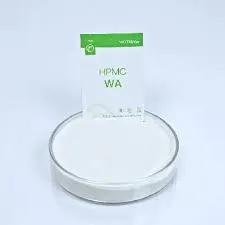
Aug . 13, 2024 12:12 Back to list
Current Market Trends and Pricing Analysis for Hydroxyethyl Cellulose Per Kilogram in 2023
Hydroxyethyl cellulose (HEC) is a non-ionic, water-soluble polymer derived from cellulose, which is widely used in various industries, including construction, pharmaceuticals, cosmetics, food, and oil drilling. Its unique properties, such as thickening, emulsifying, and stabilizing, make it an invaluable ingredient in many applications. Understanding the price per kilogram of hydroxyethyl cellulose is essential for businesses and individuals who rely on this versatile material.
The price of hydroxyethyl cellulose per kilogram can vary significantly based on several factors. These include the purity of the product, the supplier's pricing strategies, quantities ordered, and geographical locations. On average, as of 2023, HEC prices range from $5 to $20 per kilogram, with custom formulations or specific grades commanding higher prices.
One of the primary factors influencing the price of HEC is its purity and the specific requirements of the application. Higher purity levels often lead to increased production costs, which are reflected in the end price. For example, pharmaceutical-grade hydroxyethyl cellulose, which must meet rigorous safety and efficacy standards, tends to be at the upper end of the price spectrum compared to industrial-grade HEC used in construction, where the demand for purity may be less stringent.
Another contributor to price variability is the production method and raw material sourcing. HEC is produced through a process that chemically modifies cellulose, involving the use of ethylene oxide. The price of cellulose and other raw materials, energy costs, and manufacturing efficiencies can all impact the final cost of HEC. Fluctuations in the prices of these inputs can lead to corresponding changes in the price of hydroxyethyl cellulose.
hydroxyethyl cellulose price per kg

Supply and demand dynamics also play a crucial role in determining HEC pricing. As industries continue to grow—particularly those in pharmaceuticals, personal care, and construction—the demand for hydroxyethyl cellulose has risen. This increasing demand can place upward pressure on prices, especially if supply does not keep pace. Conversely, during periods of economic downturn or reduced industrial activity, prices may stabilize or even decrease.
Shipping and logistics costs are additional factors that can affect the price of hydroxyethyl cellulose. Depending on the supplier's location and distribution networks, transportation costs can vary, impacting the final price for consumers. Thus, it's advisable for buyers to consider local suppliers to mitigate some shipping costs.
To ensure they are getting the best value, businesses looking to purchase hydroxyethyl cellulose should consider bulk buying options. Purchasing in larger quantities often leads to discounts, making it more economical. Additionally, establishing a long-term relationship with suppliers can sometimes result in more favorable pricing arrangements.
In conclusion, the price of hydroxyethyl cellulose per kilogram is influenced by a myriad of factors, including purity, production costs, and market dynamics. Understanding these elements can help businesses make informed purchasing decisions and manage their budgets effectively. As demand for HEC continues to grow across various sectors, staying updated on pricing trends and exploring strategic purchasing options will be crucial for those who rely on this multifaceted compound.
-
Versatile Hpmc Uses in Different Industries
NewsJun.19,2025
-
Redispersible Powder's Role in Enhancing Durability of Construction Products
NewsJun.19,2025
-
Hydroxyethyl Cellulose Applications Driving Green Industrial Processes
NewsJun.19,2025
-
Exploring Different Redispersible Polymer Powder
NewsJun.19,2025
-
Choosing the Right Mortar Bonding Agent
NewsJun.19,2025
-
Applications and Significance of China Hpmc in Modern Industries
NewsJun.19,2025







